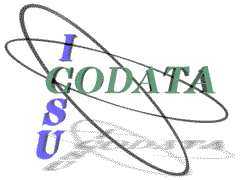Senckenberg Research Institute and Museum, Frankfurt
Botanical Garden and Botanical Museum Berlin-Dahlem
Senckenberg Research Institute and Museum, Frankfurt |
Botanical Garden and Botanical Museum Berlin-Dahlem |
TDWG 2000: Digitising Biological Collections
Taxonomic Databases Working Group, 16th Annual Meeting
Senckenberg Museum, Frankfurt, Germany, November 10-12, 2000
* IGR - Informationszentrum Genetische Ressourcen der ZADI - Zentralstelle für Agrardokumentation und -information, Villichgasse 17, 53177 Bonn, Germany
[Presentation]
Information requirements on genetic resources are included in the Convention on Biodiversity as well as in the Global Plan of Action for plant genetic resources for food and agriculture. In Germany these agreements will be implemented inter alia by establishing a set of related internet databases: The Federal Information System Genetic Resources (BIG) integrates databases on the wild flora of Germany, collections of botanical gardens, accessions of the largest German gene bank as well as other relevant databases.
Taking advantage of synergy effects, the BIG project (http://www.big-flora.de) aims at developing an integrated information system on plant genetic resources that covers a wide range of taxonomic, genetic, biological, ecological, economic and geographical information. It will permit complex searches in heterogeneous, decentralized databases, and thus facilitate access to the actual germplasm in situ and ex situ.
Technically this is realised by a central view for accessing the online information system of various inter-linked, but independent databases. This user-friendly online interface allows querying these different databases by a simple and common syntax. A reflection of different taxonomies including synonyms in one search module and a thesaurus will provide keywords like plant names or attributes (e.g. breeding traits) or other factual data like geographical references for searching the system.
A so called BIG-Kernel (search agent) communicates with decentralized and heterogeneous databases via XML. Wrappers for different database systems translate the BIG-XML-queries into local syntax and scheme. They also produce the XML-responses corresponding to the BIG-DTD. The incoming XML-data form the databases get mixed by user demand and xslt is used to give a user-friendly presentation of the result.
TDWG | Participants | Presentations | Senckenberg Museum | BGBM Biodiversity Informatics
|
This meeting was co-sponsored by the Committee on Data for Science and Technology (CODATA) |
 |
Page editor: W. Berendsohn, wgb@zedat.fu-berlin.de. © BGBM 2000.